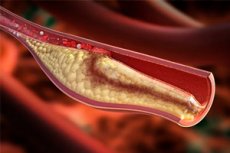New publications
An elevated atherogenic index is associated with a higher risk of erectile dysfunction
Last reviewed: 02.07.2025

All iLive content is medically reviewed or fact checked to ensure as much factual accuracy as possible.
We have strict sourcing guidelines and only link to reputable media sites, academic research institutions and, whenever possible, medically peer reviewed studies. Note that the numbers in parentheses ([1], [2], etc.) are clickable links to these studies.
If you feel that any of our content is inaccurate, out-of-date, or otherwise questionable, please select it and press Ctrl + Enter.

A new study published in the International Journal of Impotence Research has found a significant association between the atherogenic index of plasma (AIP) and erectile dysfunction (ED) in men using data from the US National Health and Nutrition Examination Survey (NHANES). This study highlights the importance of lipid profiles in assessing the risk of both cardiovascular disease (CVD) and ED.
Erectile dysfunction (ED) is the inability to achieve or maintain an erection for satisfactory sexual intercourse. ED is common among men and can have a serious impact on physical and mental health, as well as relationships. ED often shares risk factors with cardiovascular diseases, such as atherosclerosis, endothelial dysfunction, and inflammation. Therefore, ED may be considered as a potential biomarker for CVD.
The atherogenic index of plasma (AIP), which is the ratio of triglycerides to HDL cholesterol, is becoming an increasingly important indicator of cardiovascular risk. However, the mechanisms linking AIP and ED require further study, particularly in large population studies.
Data for the study were taken from the NHANES database and included information on AIP and ED for the 2001–2002 and 2003–2004 cycles. Exclusion criteria included participants over 70 years of age (due to high rates of comorbidities) and those with missing information on AIP or ED.
AIP was calculated using the formula: log10 (triglycerides/HDL-cholesterol). Key covariates included age, body mass index (BMI), blood glucose level, ethnicity, presence of CVD, cholesterol level, and other demographic and medical variables. R software was used for statistical analysis, and multivariate logistic regression was used to assess the association between AIP and ED.
The study found that participants with ED had significantly higher AIP (0.21 ± 0.02) compared to those without ED (0.08 ± 0.01), which was statistically significant (P < 0.0001). Participants with ED also had higher scores on factors such as age, BMI, triglyceride levels, alcohol consumption, diabetes, CVD, smoking, and hypertension, while HDL cholesterol and education level were lower.
The association between AIP and ED remained significant even after controlling for factors such as age, ethnicity, education level, and marital status. When participants were stratified by AIP levels, a progressive increase in the risk of ED was observed, confirming the association between higher AIP levels and increased risk of ED.
A sensitive analysis using a more stringent definition of ED (where participants “never” achieved a satisfactory erection) confirmed the initial findings of a strong positive association between AIP and ED. Subgroup analyses showed that the association between AIP and ED was particularly strong among individuals over 50 years of age, white ethnicity, individuals with CVD, and those with moderate BMI.
The study found a significant association between elevated AIP levels and increased risk of ED among men in the United States. This association was confirmed in detailed analyses and remained statistically significant even after controlling for potential confounders.
These findings highlight the importance of early AIP assessment to identify men at increased risk of developing ED, particularly those with underlying cardiovascular or metabolic disorders. Future research should focus on understanding the causal mechanisms underlying this association and developing targeted interventions to reduce the risk of ED in individuals with elevated AIP.
